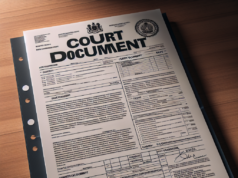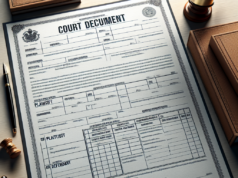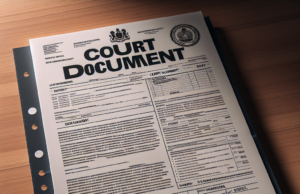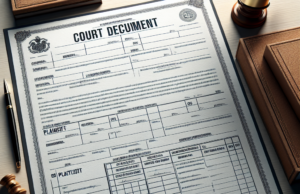
MARYLAND DIVORCE LAWS & REGULATIONS UPDATE 2023
A DECADE OF TRANSFORMATION: AN OVERVIEW OF MARYLAND DIVORCE LAWS AND REGULATIONS TIMELINE (2013-2023)
In the last decade, Maryland’s divorce laws and regulations have undergone substantial changes to reflect evolving family structures, ensure fairness, and prioritize the interests of those involved in divorce proceedings. From property division to child custody, these modifications underscore Maryland’s commitment to addressing the complexities of modern divorces. This article provides an outline of key updates in Maryland’s divorce laws and regulations from 2013 to 2023, categorized by the year of implementation.
2013: No-Fault Divorce Streamlining
– Simplification of the process for obtaining a no-fault divorce, reducing procedural complexities.
2014: Property Division Guidelines
– Implementation of guidelines for the equitable distribution of marital property, promoting fair outcomes.
2015: Child Custody Best Interests
– Emphasis on the best interests of the child when determining custody arrangements.
2016: Alimony Guidelines
– Introduction of guidelines for spousal support determinations, enhancing transparency.
2017: Digital Documentation Adoption
– Incorporation of digital documentation and electronic filing options to enhance efficiency.
2018: Comprehensive Parenting Plans
– Focus on detailed parenting plans that address custody, visitation, and child support arrangements.
2019: Child Support Review
– Periodic review and potential adjustment of child support guidelines to reflect economic changes.
2020: Collaborative Divorce Promotion
– Promotion of collaborative divorce as an alternative resolution method, reducing adversarial processes.
2021: Domestic Violence Considerations
– Strengthening protections for victims of domestic violence during divorce proceedings.
2022: High-Asset Divorce Guidelines
– Exploration of specialized guidelines for divorces involving complex financial portfolios.
2023: Online Divorce Filing
– Introduction of online divorce filing options to enhance accessibility and convenience.
Maryland’s proactive approach to updating divorce laws demonstrates its commitment to ensuring fair and just legal processes for families in transition. By adapting to modern realities and safeguarding the well-being of all parties involved, Maryland continues to uphold its principles of justice and equity.
Residency and Filing Needs
There are some aspects of divorce in Maryland that you need to know about before proceeding with anything. First off, if one spouse intends to file, that spouse will then be called the ‘Plaintiff.’ The other spouse will be called the ‘Defendant’ in the matter.
Once divorce is eminent, there is in the state of Maryland one requirement with a few stipulations needing to be met before filing.
• Either party, provided that either party is a resident of the State, can file for divorce; however, if the grounds for divorce occurred outside of the state, a 1-year residency is required among both parties. If divorce is filed under the grounds of insanity, the requirement is then increased to two years.
Reasons for Divorce in Maryland
There are many reasons for it, but for the most part the court declares these grounds:
• Adultery
• Willful Abandonment for at Least 12 Months
• No Reasonable Expectation for Reconciliation
• Voluntary Separation for at Least 12 Months
• Involuntary Separation for at Least Two Years
• Institutionalization Due to Mental Insanity for at Least Three Years
• Evidence of Alcohol and/or Drug Abuse for at Least Two Years
• Intolerable Cruelty Against the Plaintiff or Child(ren)
• Felony Conviction for at Least Three Years and Has Already Served 12 Months of Sentence
The Definition of “Legal Separation” Versus “Divorce”
Of course, both parties to a marriage may elect to “legally separate” instead of proceed through a divorce. What’s the difference?
A legal separation is essentially both parties agreeing to go their separate ways without dissolving the marriage. There are many reasons for doing this, one being the need to retain certain benefits within the marriage agreement that would otherwise be discontinued upon a divorce. For instance: medical insurance.
Typically, though, a legal separation does lead to a divorce agreement, in which case all grounds for divorce move forward, as well as the marriage then becomes dissolved in a court of law along with any other benefits and assets, questions of child custody, parenting time, and support (if children are in fact present).
The Primary Documents For a Divorce in Maryland
Ten or twenty documents may be included in the proceeding, not limited to these:
• Civil – Domestic Case Information Report
• Certificate of Service (for Complaint)
• Marital Settlement Agreement
• Financial Statement (Plaintiff)
• Answer to Complaint
• Request for Hearing
• Bill for Divorce
• Decree of Divorce
Divorce in Maryland : Property Distribution
When it comes to divorce in Maryland, it’s important to know that the state favors “equitable distribution.” This simply means that all assets are divided equally among both parties regardless of either party’s wishes. Sometimes, though, this doesn’t necessarily mean that “equitable” will be equal. Rather, the word fair is more the proper term to be used when dealing with property distribution.
Typically the court will encourage both the Plaintiff and Defendant to come to an agreement about property distribution. If there’s no agreement, the court will decide.
In addition, the court may also award the wife her former or maiden name upon agreement of the divorce.
Divorce in Maryland : On the Subject of Spousal Support
This issue may only be relevant if the court or both parties see a need for either party to support the other financially for any reason either on a temporary or permanent basis.
Divorce in Maryland : Dealing With Child Custody
Generally speaking, parents can come to an agreement on this matter regarding divorce in Maryland in several ways:
• Joint Physical Custody
• Sole Physical Custody
• Joint Legal Custody
• Sole Physical Custody
“Joint Physical Custody” is essentially sharing custody of the child(ren) in terms of where the child(ren) may live: either in mother’s residence, or father’s residence. Child(ren) retains two addresses. Both parties are equally responsible for the well-being of the child(ren) as well as for the education of the child(ren).
“Sole Physical Custody” is when one party retains physical custody of child(ren) and the other party retains “Visitation Rights.”
“Joint Legal Custody” is when both parents share the right to make important decisions in the life/lives of the child(ren), which may include legal name, lifestyle, needs, etc. etc.
“Sole Legal Custody” is when only one parent retains the right to make important decisions in the life/lives of the child(ren).
Divorce in Maryland : How to Determine Child Support If Necessary
Typically, the non-custodial parent pays child support. The Income Shares Model is employed to determine the amount. By combining W2’s and other worksheets, an amount is determined that would best suit the needs of the child(ren) without unfavorable financial problems on the non-custodial party.
Generally speaking, both parties may agree to an amount. But in the event that a Plaintiff and Defendant don’t, the court may utilize state support guidelines to arrive to a decision as to how much support is necessary for the child(ren).



























